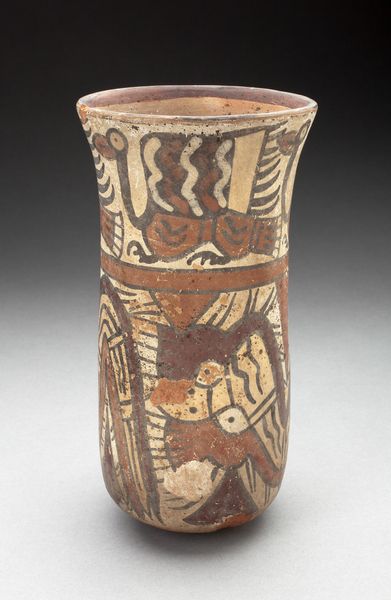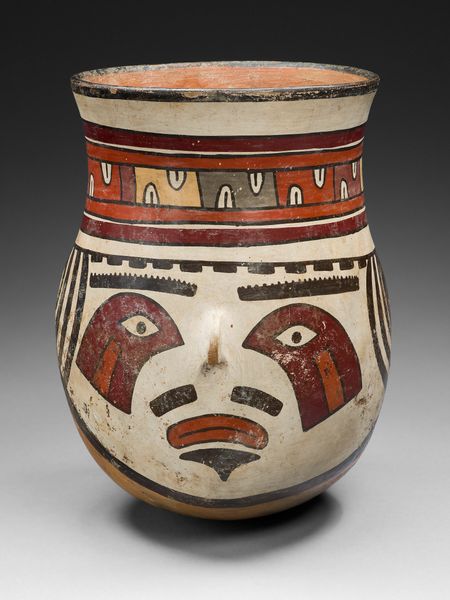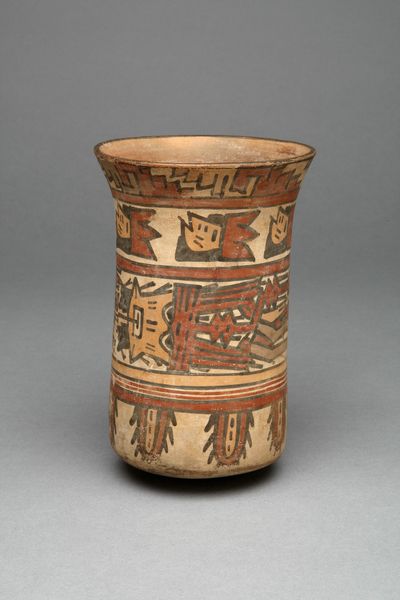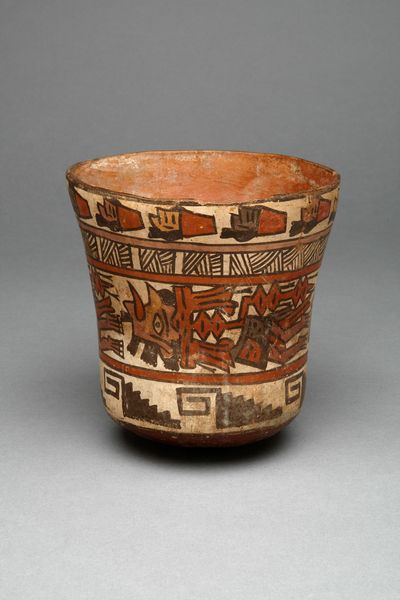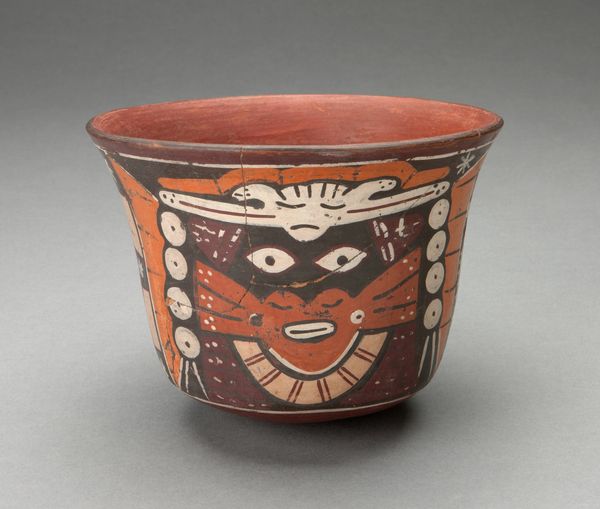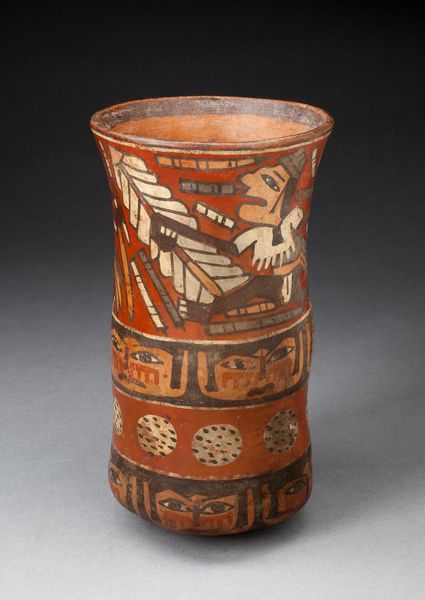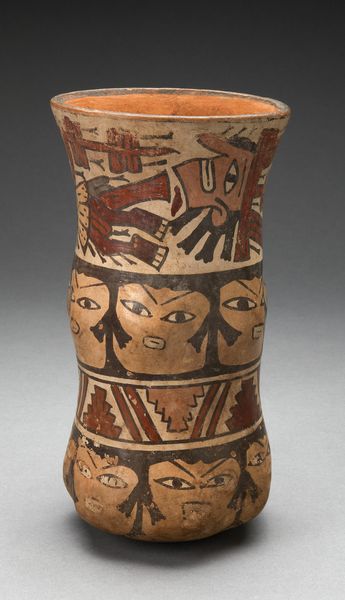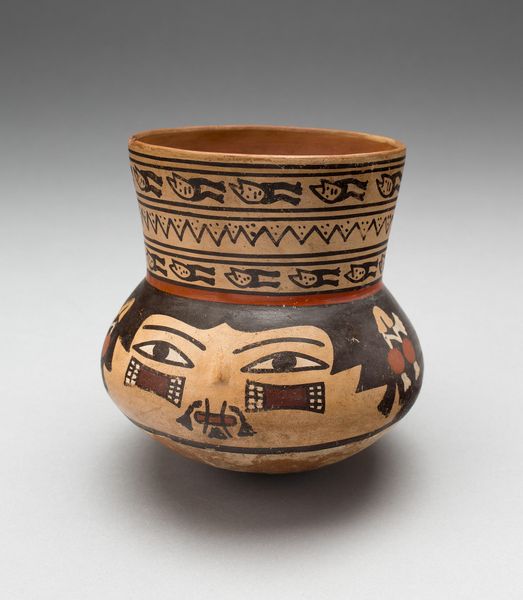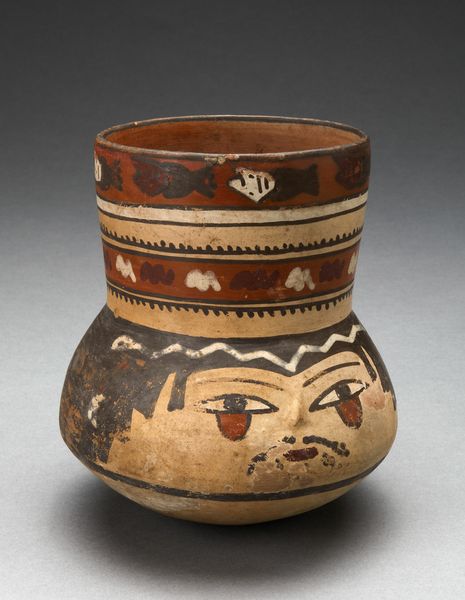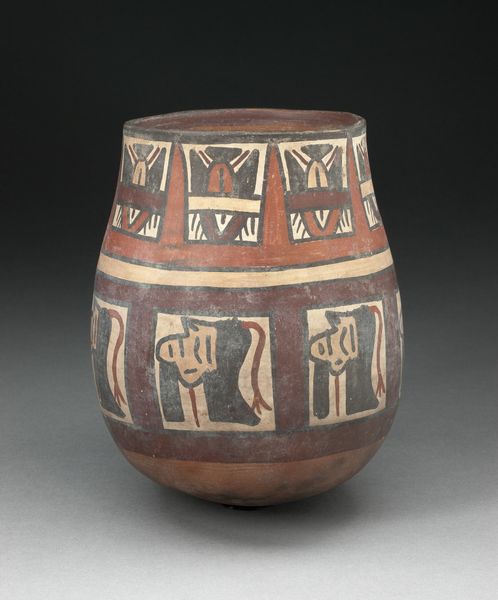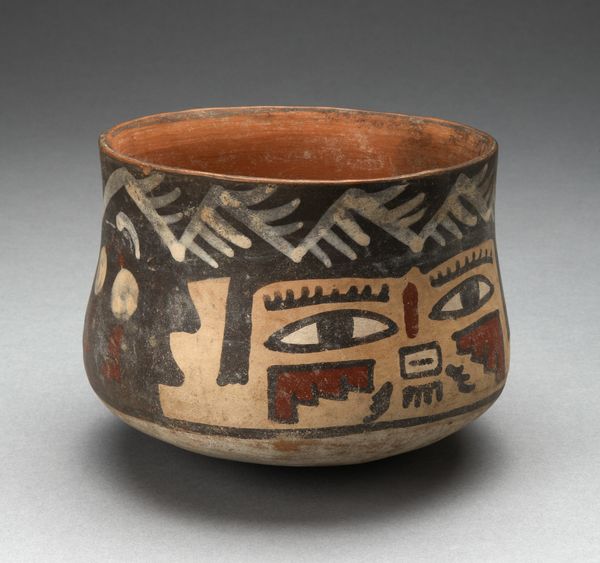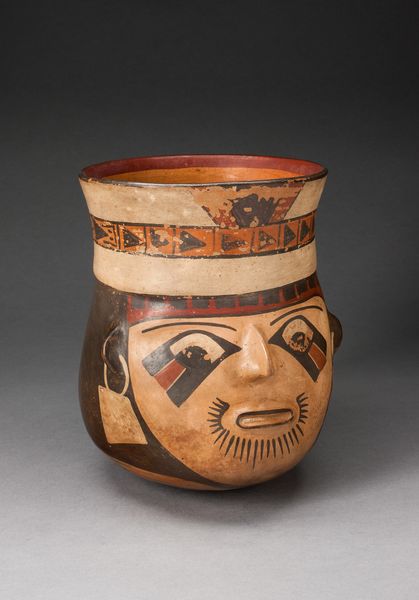
ceramic, earthenware
#
ceramic
#
figuration
#
earthenware
#
ceramic
#
indigenous-americas
Dimensions: 18.7 × 13.5 cm (7 3/8 × 5 5/16 in.)
Copyright: Public Domain
Editor: So, here we have a "Curving Beaker with Rows of Abstract Human Faces," crafted sometime between 180 and 500 by the Nazca people. It's a ceramic piece, and I find myself immediately drawn to the almost eerie repetition of faces around the vessel. It really emphasizes its three-dimensional form. What do you make of its composition? Curator: The ceramic's curvature undeniably directs the eye in a continuous loop. Observe the precise articulation of each element: the abstract figures at the top, sharply delineated from the bands of faces that embrace the beaker's waist. Note how the horizontal registers offer structural stability and the interplay between positive and negative space, especially in the upper register. Editor: I'm struck by the geometric stylization of the human faces, and the flat planes that suggest depth. Is there a symbolic reading of those bands? Curator: Indeed. While definitive interpretation requires further contextual research, the rendering invites a semiotic analysis. Consider the eyes—how their repetition suggests heightened observation, or the cyclical nature of time. Are they purely decorative, or do they carry symbolic weight about ritual practices? How do you feel about the artist's choices for symmetry versus asymmetry within the layout? Editor: I think it brings an interesting tension. While the bands of faces provide symmetry, the abstract designs on top, especially in contrast, feel much more fluid and dynamic. It challenges you not to see the beaker as a purely functional object, but something more deliberately designed and deeply intentional. Curator: Precisely. By acknowledging this interplay of elements, one can delve deeper into formal investigations regarding Nazca aesthetics. I’ve changed my first view about its pure ornamentation as our discussion advances. Thank you. Editor: Yes, definitely, I concur with you! Looking at this Nazca ceramic, I initially saw an old pot but now discern that the intentional use of symmetry and asymmetrical elements gives much more to explore than the vessel itself.
Comments
No comments
Be the first to comment and join the conversation on the ultimate creative platform.

